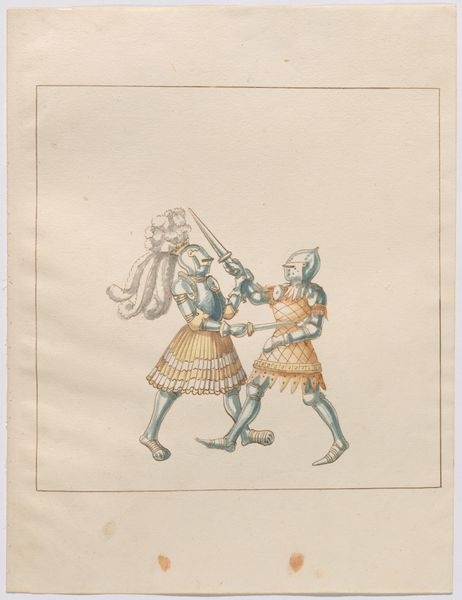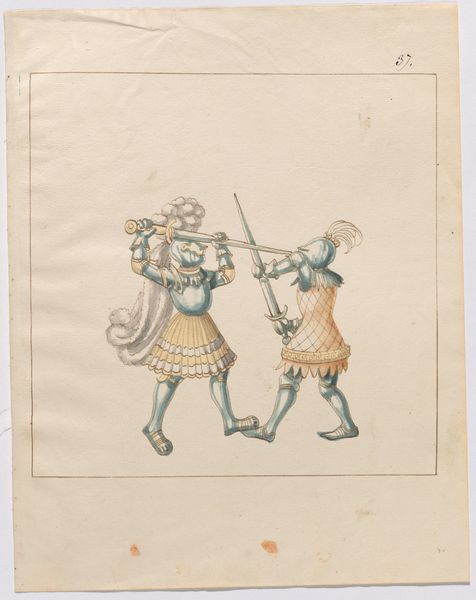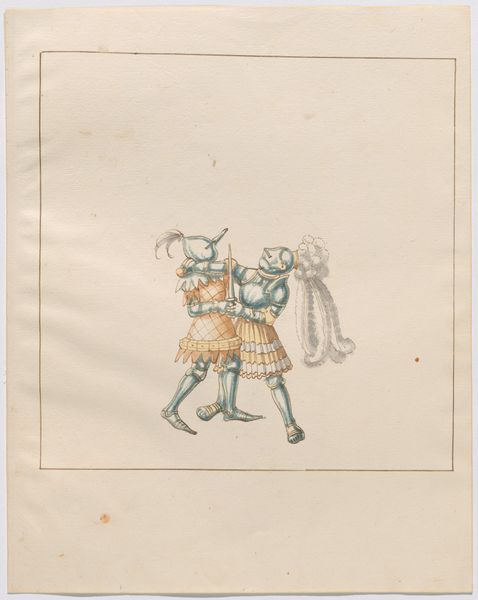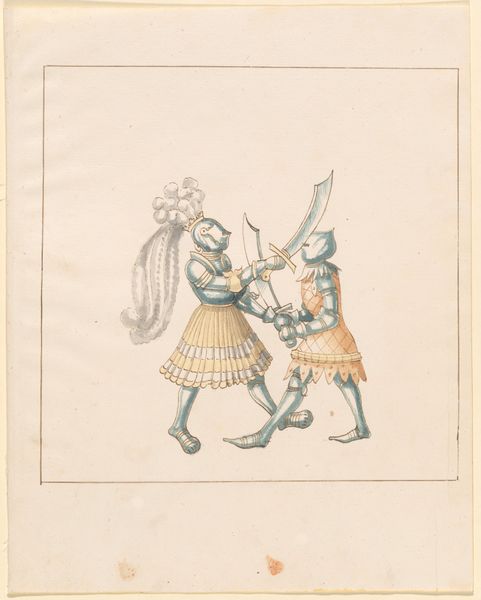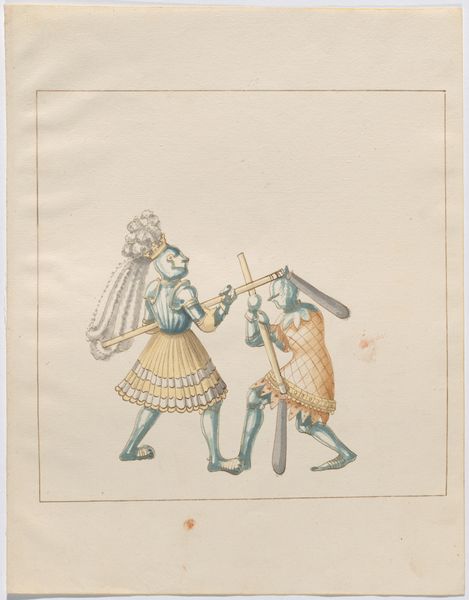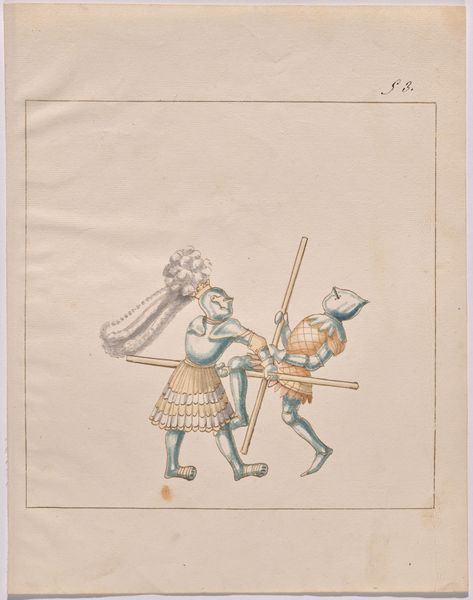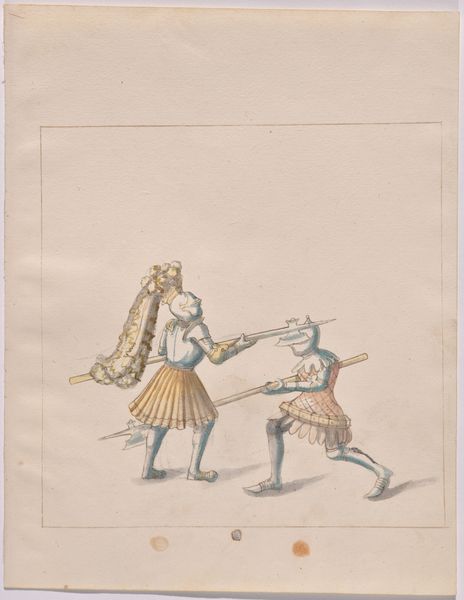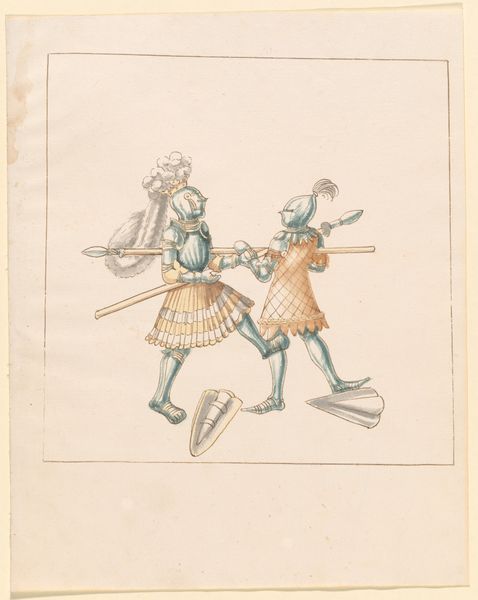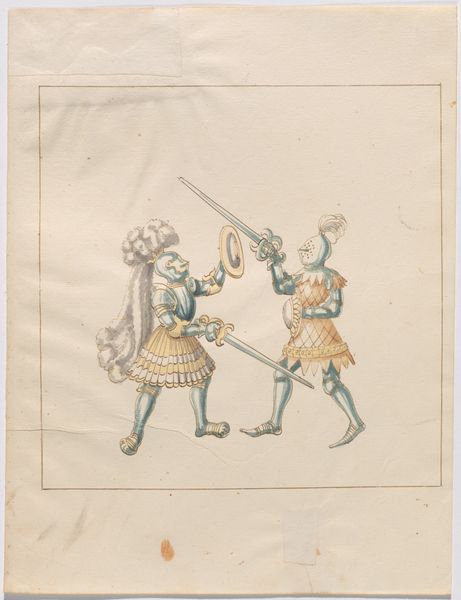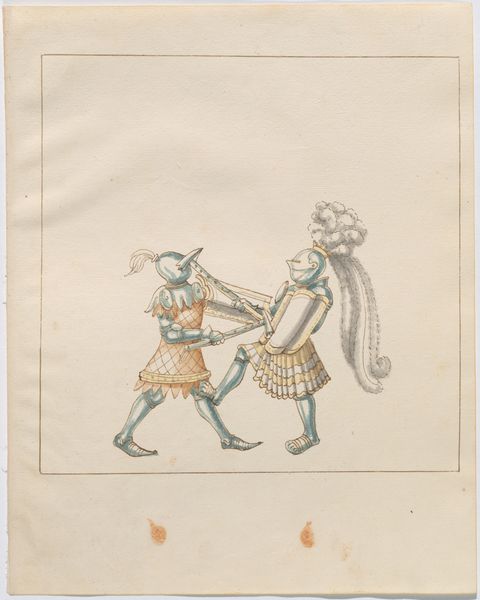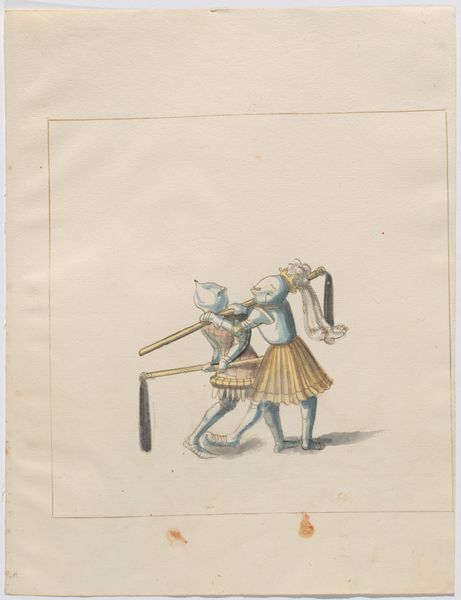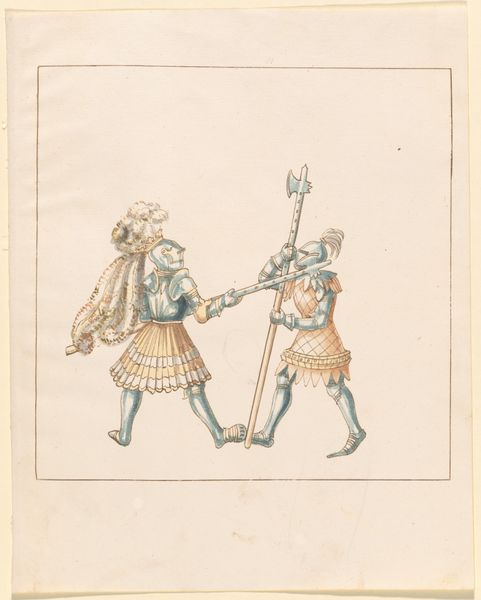
drawing, watercolor
#
drawing
#
water colours
#
figuration
#
personal sketchbook
#
watercolor
#
history-painting
#
italian-renaissance
Dimensions: sheet: 33.6 × 26.3 cm (13 1/4 × 10 3/8 in.)
Copyright: National Gallery of Art: CC0 1.0
Curator: Let’s discuss this drawing, believed to be made between 1512 and 1515, titled "Foot Combat with Glaives," by an anonymous artist. It is rendered in watercolor and, given the period, falls under the Italian Renaissance movement. What strikes you immediately? Editor: The scale. There's an intimacy here. The quick application of the watercolours also hints to me at the casual nature of the art-making. It is immediately striking and appears as if a sketch, or study, rather than something formal. Curator: Absolutely. I see this within a framework of performative masculinity. These aren’t just figures in armour; it’s a demonstration, a sort of martial ballet visualized in an era grappling with power, hierarchy, and the very concept of the noble male body. What is so intriguing to me, is their obvious positions of wealth and authority demonstrated by their fashion. Editor: Agreed. We can’t ignore the materials involved here—the labour needed to create the armour, and glaives—what metal was used and from which lands. These were expensive and functional items of military arsenal. Curator: The armour undeniably signifies privilege, a visual language speaking volumes about its owner. We see a demonstration of class structures played out in these tournaments of combat. Their clothing too tells a very gendered story about violence. What message were the noblemen trying to relay, and more broadly, who would be at such combat events? Editor: The glaives as objects of power. Consider their manufacture; the skills and workshops necessary. This ties it back to questions of material conditions in society and the craftsmanship central to martial practice. These tools tell a history about skill. Curator: So true, we see both status symbols as well as objects crafted for a specific and practical function and used to perform and perpetuate gendered notions. "Foot Combat with Glaives" offers us a glimpse into this historical moment, revealing how visual art intersected with material production, gender roles, and political hierarchies. Editor: It all echoes into each other. Thank you for highlighting this. Considering the skill in crafting each element gives us some insight as to the message intended when witnessing two noblemen combat one another.
Comments
No comments
Be the first to comment and join the conversation on the ultimate creative platform.
